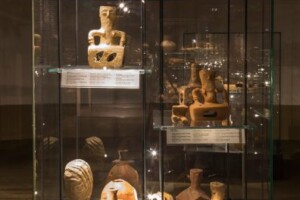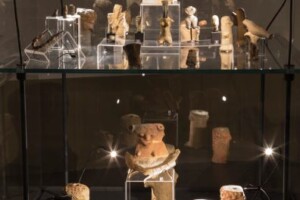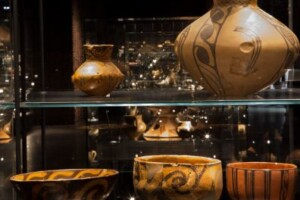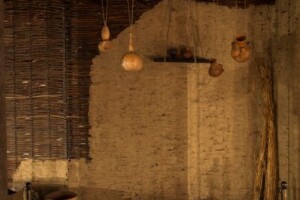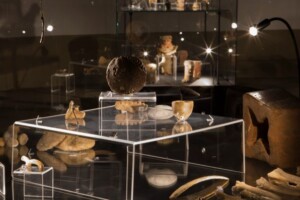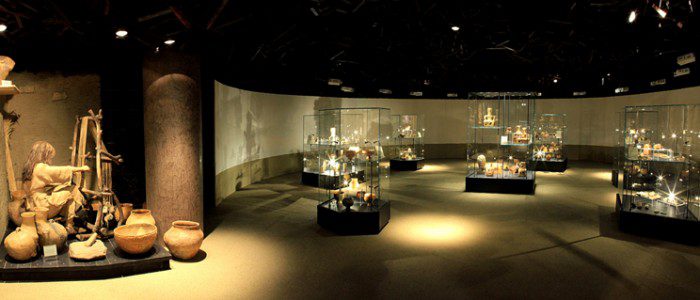
The chronological framework of the Macedonian Neolithic is compatible with the existing periodization in the Balkans. On the archeological map of the Republic of Macedonia ca. 200 Neolithic sites have been registered. During the period between 6.300 and 4.200 BC, on the territory of Macedonia two cultural groups were defined: Anzabegovo-Vrshnik (I-IV) and Velushka-Porodin (I-IV), named after eponymous sites (Barutnica, village of Anzabegovo; Vršnik, village of Tarinci; Velushka Tumba and Tumba, village of Porodin); they displayed common material, but with individual characteristics.
Most of the archaeological items in the Neolithic collection originate from the developed Neolithic period in the Anzabegovo-Vrshnik cultural groups II-III (5.800-5.300 BC.), from the site of Tumba at Madzari. The remaining items are from sites in the villages of Stenche, Dolno Pelcishte, Mirshevci, Lopate, Nikushtak, Anzabegovo, Gorobinci, Damjan, Resava, and Vranishte.
Most of the exhibition is devoted to ceramic household goods, but also to items for different ritual activities. The pottery is presented in terms of its range, quality, form, and ornament, through which the basic and individual elements of the cultural groups are also preserved. Pottery from the earliest phases of the Anzabegovo-Vrshnik group is recognized by the so-called floral style with white painting. The ornaments of the ceramic forms with a beautiful polished base of the Velushko-Porodin cultural group are painted with white color in the form of angular, regular triangles, rugged lines, letter Z and sigma.
The high point of the Neolithic culture in Macedonia was during the period of the developed Neolithic, Anzabegovo-Vrsnik II-III. Vessels such as amphorae and goblets with fine red background were painted with dark brown ornaments in the shape of spirals, vertical and alternating thick and thin lines, often with vertical spirals between them. The floral style continued with new aesthetic inventions. As a special form, among the ceramic vessels in the Macedonian Neolithic stand out the askoi. The late Neolithic period marks a time of new social and ethno-cultural changes. The stratigraphic data correlates the final layer of Anzabegovo-Vrshnik IV (5.300-4.200 BC) with the emergence of so-called Vincha pottery.
Social relations in the communities, especially in the family, were subordinated to the general interests of survival and well-being, in which woman earned a special social status. She was a powerful inspiration for the Neolithic sculptor to perpetuate her body and spirit through various figurines made of clay, stone and bone. The role of woman as child bearer and mother was equated with a fertility cult or the cult of the Great Mother goddess, as indicated in the ceramic productions of both Macedonian cultural groups. A particular iconography of this cult is found in the Macedonian Neolithic, and, because of its original artistic design and expressiveness, it stands out from the Neolithic of neighboring areas.
The image of the spiritual culture of the Neolithic population is complemented by unusually interesting cult objects. Among them the altars with zoomorphic representation and the altar tables stand out. Altar-models of a house in Pelagonija are another confirmation of the important cult focused on the house and the place called home.
Within the exhibition a variety of stone, bone and ceramic artifacts are presented. Their purpose above all is utilitarian, but there are also artifacts whose purpose is unclear; they present an additional challenge for Neolithic archaeology.
M.A Elena Stojanova Kanzurova, archaeologist, custodian advisоr for Neolithic
elena_mk2004@hotmail.com


